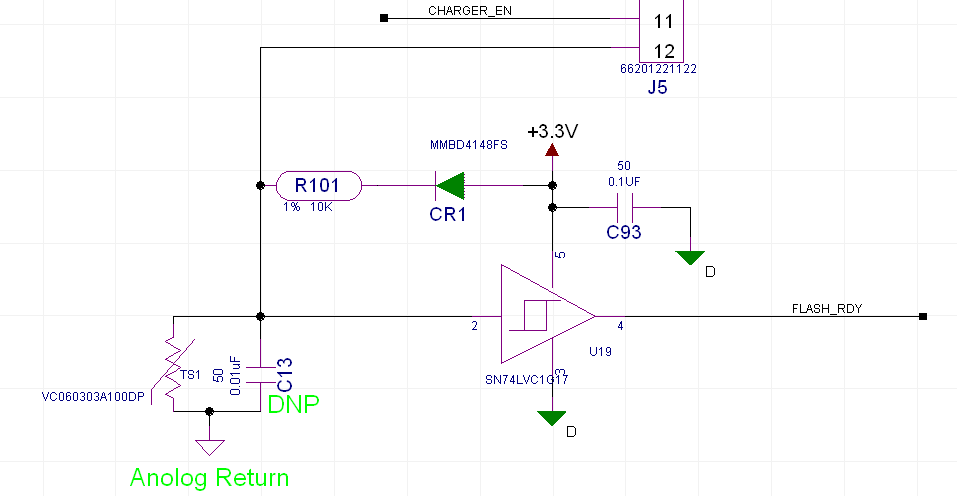Hi,
We are using SN74LVC1G17 to protect one signal that is crossing the board. We know that the signal has some spikes due to noise on the the source signal. The source output is an open drain signal on a flash board. The schematics is as following.
The Analog GND and DGND has a single point connection on the board. The TS1 starts clamping around 5V, and clamps at 12V.
Recently, the input (pin2) of U19 constantly get burned.When it is burned, the resistance is about 30ohm from pin2 to pin3. We checked input. The source signal comes from the flash board has a spike at about +/-120V for about 5us to 10us when the flash is triggered. The frequency is about 3Mhz to 5Mhz. The noise is coupled into the input, but there's not much energy at all. The chip is designed for ESD protect, and should be able to handle the spike. I'm scratching my head, what could possible cause the failure?
Any suggestion is appreciated.
thanks
Peng


